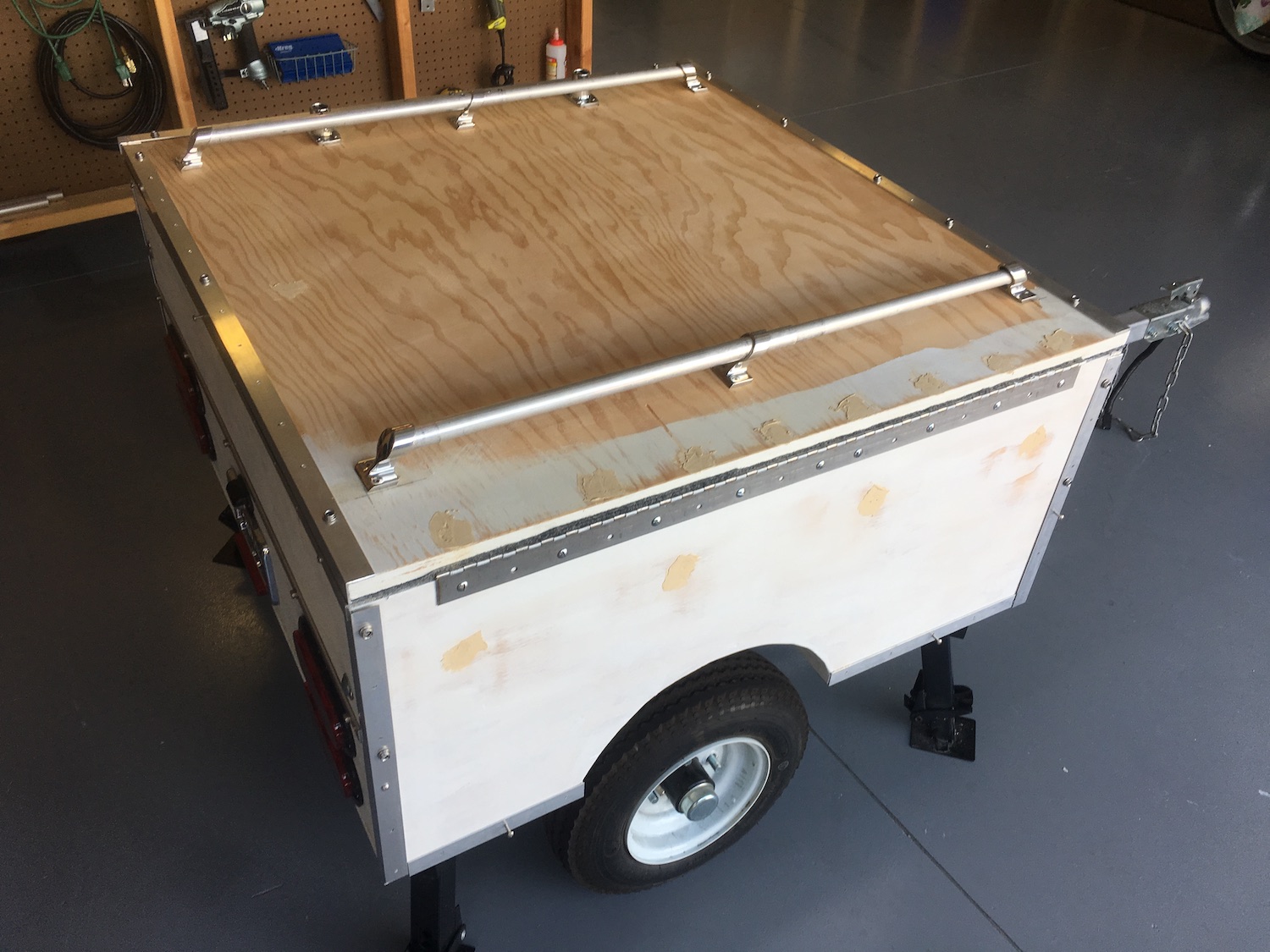1.1 Progress on Prototype Tent Camper

After settling into our new place and spending about six months building out garage cabinets, I started looking again at the Kampereen prototype tent camper. I wanted to get this thing done. Requirement #1: Whatever I did would need to fit the footprint of the tent because I didn’t want to drop another $600 on sewing when I was still in the prototyping stage. Besides, it was a nice tent and if I could get the rest of my design to work, it would be very useable.
Okay, first thing was the box depth. I new that had to be much deeper to be useful so I settled on 18″. Given 3 to 4″ for holding the tent left about 14 inches of headroom for gear. Second was the box material. I decided that PVC wasn’t going to be the solution I wanted, so I opted for 3/4″ marine grade plywood. I new that would be rigid enough to handle the suspended weight of the cargo box.
Those were the biggest changes. Others were more of a refinement. After a ton of Internet research I discovered an interesting fact: 3/4″ PVC pipe fittings will fit over a 1″ aluminum tube which meant that 3/4″ PVC 90 degree pipe elbows would fit over a 1″ aluminum tube. Which meant that I could toss that shitty conduit and make tent bows with telescoping aluminum tubes. I could also use PVC T fittings in the middle of the bows and PVC pipe to make the “spine” of the tent structure. Easy, inexpensive, durable. Perfect.
Another refinement: The bed. I ditched the idea of having a hinged lower bed area, opting instead for a two-piece solution that covered the cargo area like a lid. If both pieces were flipped “up”, they were flush with the top half of the bed, making a full sleeping area. Flip them over to the “down” position and they created a pocket where the tent materials could be stored. Also, when in the “up” position, they held the tent poles in place. That made the tent frame super rigid.
Another refinement: The original tent attachment method entailed the use of hook-and-loop material around the perimeter of the tent. That was okay because it was sewn to the tent material but on the camper base, it was a problem. It didn’t adhere well enough to the camper’s base and routinely fell off. Instead, I switched to snaps. This worked a lot better in practice.
Questions?
For more information about this camper you can contact me through this page.
My business is selling motorcycle campers and trailers and the gear you need to tow them with a motorcycle or trike. I run two sites: Open Road Outfitters and US Hitch.



